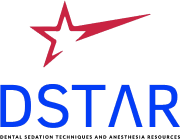Course Overview
Online sedation renewal course for Level 1,2,3,4 TSBDE license endorsements. Topics covered include Sedation Pharmacology, Patient Selection, Sedation Emergency, Office Emergency, Airway Evaluation, Airway Adjuncts and Equipment, Emergency Scenarios with EKG Evaluation and Management.
Each course topic is presented with a downloadable pdf chapter and a power point video presentation. Each presentation is followed by a quiz. At the completion of all the course sections, there are video emergency scenarios, which lead you through different emergency situations. These scenarios include vital signs and EKG tracings and ask you to determine the next course of action. They are for your benefit and practice. Upon successful completion of the course and completion of the course evaluation, you will havet access to your certificate.
Intended Audience
This course caters to the following groups:
- Texas Dental Professionals requiring sedation recertification.
- Dental Professionals
Learning Objectives
- Participants will be able to identify and demonstrate basic airway maneuvers such as the head-tilt/chin-lift and jaw-thrust to alleviate partial airway obstruction, utilizing appropriate techniques for patients with and without suspected cervical spine injuries.
- Participants will learn the indications for and how to effectively use advanced airway devices including supraglottic airways, endotracheal tubes, and surgical airways, with an emphasis on correct placement and the verification process to ensure proper gas exchange and prevent complications.
- Participants will be able to distinguish between the clinical features of partial and complete airway obstructions and implement appropriate interventions, including the use of basic and advanced airway maneuvers and adjuncts.
- Trainees will understand the red flags indicating an at-risk airway and learn how to quickly assess and manage scenarios such as cannot intubate, cannot ventilate (CICV), using a structured approach including the use of emergency surgical airways.
- Participants will gain knowledge of the various types of airway adjuncts (e.g., oropharyngeal and nasopharyngeal airways), their indications, contraindications, and the proper techniques for insertion, ensuring safety and minimizing complications like trauma and aspiration.
- Participants will be able to describe and implement a comprehensive pre-procedure evaluation, including the use of a preoperative sedation/anesthesia checklist, ensuring adherence to required documentation such as medical history, medication review, and ASA classification as outlined by Texas Administrative Code §110.13.
- Learners will identify and document continuous monitoring requirements during anesthesia, including consciousness, oxygenation, ventilation, and circulation, in accordance with Texas Administrative Code §§108.7 and 108.8, ensuring that details such as oxygen saturation, respiratory rate, and blood pressure are recorded at specified intervals.
- Participants will understand and apply the guidelines for post-procedure monitoring, ensuring that all necessary observations and evaluations are continually recorded until the patient meets discharge criteria, including the continuous assessment of the patient’s level of consciousness, oxygen saturation, and vital signs.
- Trainees will gain knowledge of the legal requirements for anesthesia records and documentation, including the specific provisions of the Texas Administrative Code that govern the preparation and maintenance of anesthesia documentation in dental practice.
- Participants will learn to assess and document whether a patient meets the defined discharge criteria post-anesthesia, as per AAPD guidelines and Texas Administrative Code, and ensure that all discharge instructions are communicated both verbally and in writing to the patient or caregiver.
- Participants will be able to identify the signs and symptoms of common emergencies such as airway obstruction, acute coronary syndrome, allergic reactions, bronchospasm, cardiac arrest, and seizures, and apply immediate management techniques.
- Learners will understand and execute dental office emergency protocols, including the use of medical crisis checklists, to enhance the median percentage of interventions performed effectively, as demonstrated in the provided study.
- Trainees will learn how to correctly use emergency medical equipment such as defibrillators and administer appropriate emergency medications, focusing on the correct dosages and routes of administration as per the scenario needs.
- Participants will be familiarized with the legal requirements and co: Trainees will learn how to correctly use emergency medical equipment such as defibrillators and administer appropriate emergency medications, focusing on the correct dosages and routes of administration as per the scenario needs. compliance standards for managing emergencies in dental settings, ensuring documentation and adherence to protocols as per health regulations.
Please visit the course page for a complete list of learning objectives.
Course Schedule
Self Paced Online Training
Course Curriculum
This section examens several sedation tragedies and how they are portrayed in the media. This serves as a reminder that improper sedation techniques can be disastrous and that proper training and understanding of these topics is important.
Discusses pharmacology of common sedation medications and reversal agents.
Discusses ASA physical classifications and how various diseases influence the choice of sedation and the response to sedation.
Discusses Evaluation of the pediatric and adult airway and airway adjuncts and tools,
Discusses requirements for proper documentation an informed consent.
Discusses Office Based Anesthesia considerations.
Discusses common emergencies that could occur in any office, to individuals who are not even patients, or have not started any treatment. Also covers treatments and medication doses. Includes emergencies such as ACS, Myocardial infarction, Seizures, Cardiac arrest, and others.
Discusses common emergencies encountered during sedation. While there are emergencies common to both office and sedation emergencies such as Cardiac Arrest, there are also emergencies unique to sedation such as oversedation and hypoventilation, emesis and aspiration, anaphylaxis and others. Emergency treatment, medications, and doses are provided.
Six different emergency Scenarios to practice treatment of emergency situations.
AGD Subject Code
340 Anesthesia and Pain Management
Credit Hours
Credit Hours: 12
Disclosure
Dr. Garza and Dr. Young have no relevant financial relationship to any product or company mentioned in this CE exercise. No financial support has been provided for the development of this CE material by any company.
Accreditation
DSTAR – Dental Sedation Techniques and Anesthesia Resources
Nationally Approved PACE Program Provider for FAGD/MAGD credit
Approval does not imply acceptance by any regulatory authority or
AGD endorsement
10/1/2023 to 9/30/2024
Provider ID # 422273
What is dental sedation?
Conscious sedation is a drug-induced depression of consciousness during which the patient responds purposefully to verbal commands, either alone or accompanied by light tactile stimulation. No interventions are required to maintain a patent airway, and spontaneous ventilation is adequate. Cardiovascular function is usually maintained.

This Course Includes
![]() Certification of Completion
Certification of Completion
Can’t enroll this time?
Stay in the loop for future courses.
Frequently Asked Questions
Who should enroll in these courses?
Our courses are designed for dental practitioners, including dentists, dental hygienists, and dental assistants, who want to enhance their proficiency in sedation and anesthesia to better serve their patients.
Are these courses accredited?
Yes! DSTAR Education is a certified AGD PACE provider! If your state accepts CDE from certified PACE providers then this CDE is accredited.
DSTAR – Dental Sedation Techniques and Anesthesia Resources
Nationally Approved PACE Program Provider for FAGD/MAGD credit
Approval does not imply acceptance by any regulatory authority or
AGD endorsement
10/1/2023 to 9/30/2024
Provider ID # 422273
What levels of sedation are covered in the courses?
Sedation Levels 1,2,3 and 4 as defined by the TSBDE are covered in the training.
![]() Get Started
Get Started
Start your Dentistry Journey Today
Whether you’re a dental student eager to expand your knowledge or a practicing dentist seeking valuable resources, we have a wealth of educational tools, information, and support to offer.
 Take Free TSBDE Anesthesia Jurisprudence Practice Exam Now!
Take Free TSBDE Anesthesia Jurisprudence Practice Exam Now!





